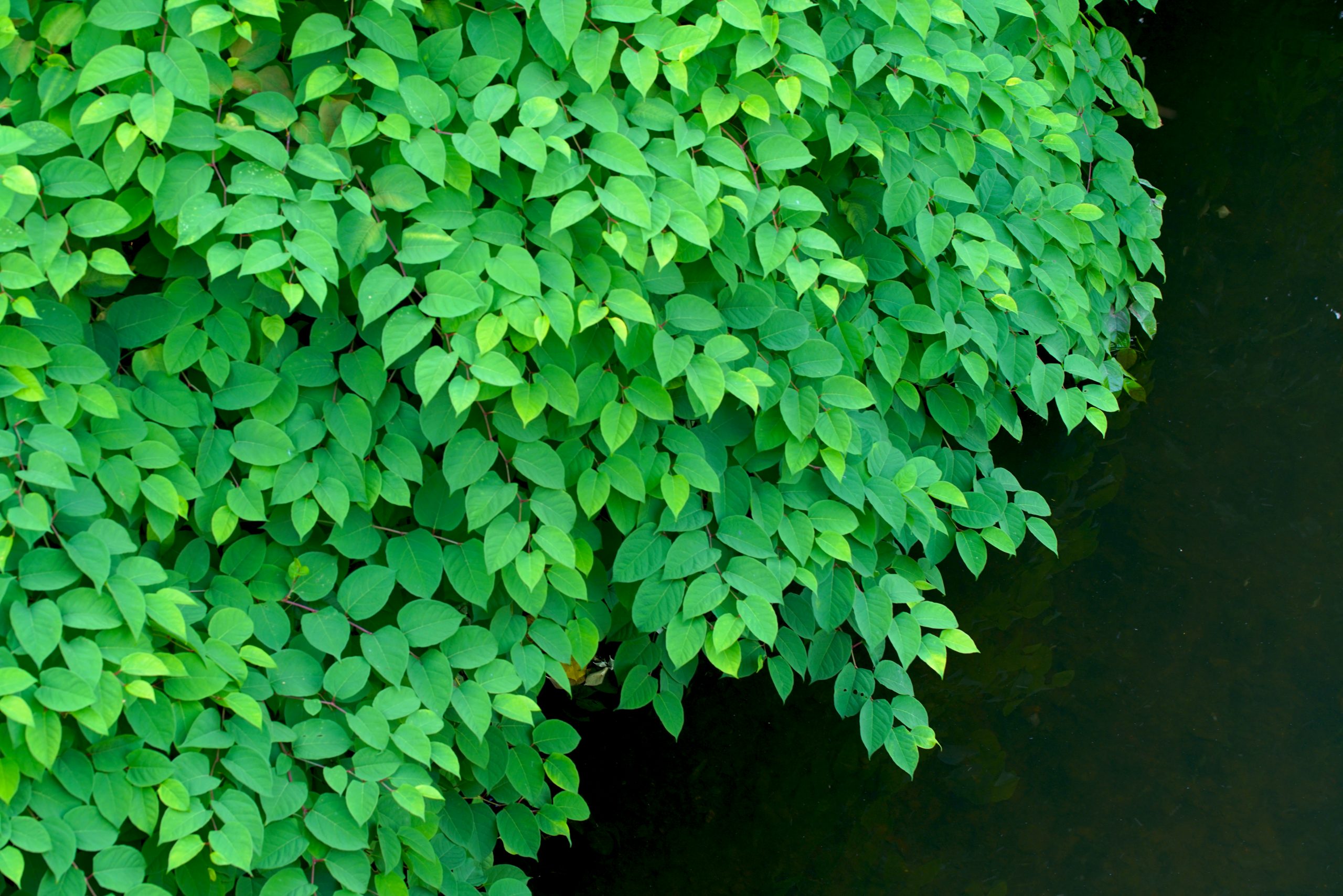Japanese knotweed, otherwise known as knotweed.
Find out what knotweed is, how to identify knotweed, the legal issues around growing knotweed and stopping the spread, and the cost of getting rid of knotweed.
What is knotweed?
Japanese knotweed is a tall green plant that has an invasive growth pattern, meaning it can quickly dominate the environment in which it is growing by out-competing other species. Being an incredibly resilient plant it is difficult to get rid of, in fact the only way to completely remove it is to have it excavated and disposed of by a licensed contractor.
MORE INFORMATION: ALL ABOUT KNOTWEED
Where does knotweed grow?
Knotweed can grow in most soil types and environmental conditions, but it is particularly fond of man-made habitats. This means it will often be found growing alongside roadways, highways, rail tracks and industrial sites. Knotweed will grow new shoots/plants if its underground root systems (called rhizomes) are disturbed so another common place to find knotweed is on construction sites or areas of development. Ground disturbance and being left uncontrolled are the two main reasons for knotweed spread. When knotweed is allowed to spread onto other land or property it is called ‘encroachment’ and can lead to legal issues.
MORE INFORMATION: WHAT DOES KNOTWEED LOOK LIKE
How to stop knotweed spreading
Knotweed needs to be controlled as it spreads like a wildfire up to 20cm per day, quickly engulfing areas of land. Knotweed can either be controlled via a treatment plan, or excavated and removed – the latter option being the only way to permanently get rid of it. In some circumstances and only if it’s deemed suitable to be left onsite, knotweed can be stopped from spreading by digging all parts of the plant up and burying it with the installation of a root barrier system to contain any potential growth.
MORE INFORMATION: ENCROACHMENT
How much does it cost to get rid of Japanese knotweed?
A survey will cost you £225 + VAT if we don’t find knotweed. If knotweed is identified then the survey is free of charge. When it comes to getting rid of knotweed, there are two cost options for knotweed; a treatment plan will be paid every year for the duration of the plan (typically 3, 5 or 10 years) whilst an excavation project will be quoted as a bespoke contract that factors in various considerations such as land use, site access and any environmental or public requirements. So there is no set answer, it’s best to get in touch for a quote.
MORE INFORMATION: TREATMENTS AND REMOVAL
Is it illegal to grow knotweed and do you need a license to treat knotweed?
It is not illegal to grow knotweed, however it is a legal matter if you allow knotweed to spread, not least because the presence of knotweed on a site is a bio-security risk.
A license is not required to treat knotweed, however there is legislation around allowing knotweed to spread, and for disposal of knotweed. Knotweed is categorised as an invasive species under the Wildlife & Countryside Act 1981 in England and Wales and the Wildlife and Natural Environment (Scotland) Act 2012 in Scotland which both state knotweed is the responsibility of the the land owner. Below is a list of the current government guidelines:
- Anyone using herbicides to treat knotweed must hold a spraying certificate, or carry out the work under the direct supervision of a certificate holder.
- Herbicide users must carry out a COSHH assessment.
- If the area to be treated is protected or a site of special scientific interest (SSSI) permission must be granted by Natural England.
- If knotweed is growing near to water a special AquaHerb license must be applied for – through the Environment Agency.
Additionally the use of chemicals to treat knotweed is governed by The Control of Pesticides Regulations 1986, which states precautions must be made to protect humans, plant and animal species and the environment during herbicide application. The Environmental Protection Act 1990 states disposing of Japanese knotweed must be conducted by a licensed waste carrier as stated in Waste Regulations 2011 and disposed of at a licensed facility with all transfer notes completed and stored as evidence. If knotweed has not been treated before off-side disposal and simply removed, then it is not classed as hazardous waste, however if certain pesticides have been used to treat the knotweed removed, the waste is deemed as ‘hazardous’ and requires a consignment note as set out in the Hazardous Waste Regulations 2005.
So you can see there are various Laws, Acts and Government guidelines around knotweed – which are NOT TO BE IGNORED!
To get advice, a quote or to book a survey contact us below:


